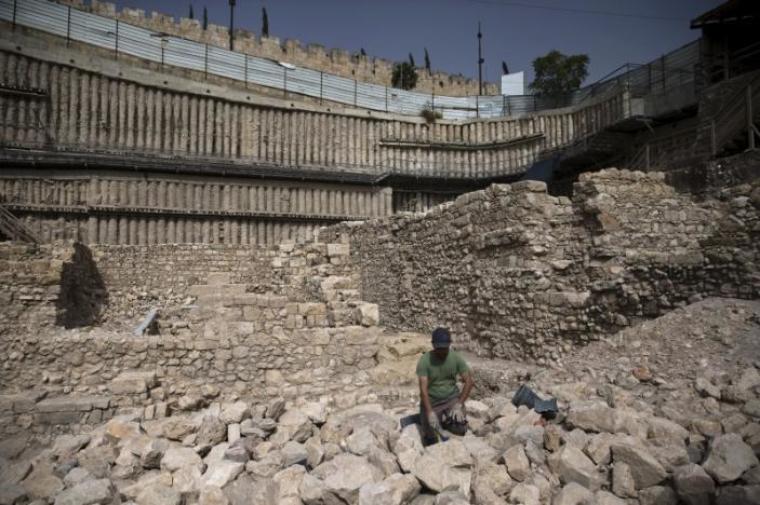Site of Jesus Christ's resurrection may have been found, archaeologists say

Archaeologists believe they may have discovered the location of the town of Emmaus, where Jesus is recorded in the Bible as appearing to two of his disciples after His resurrection.
Scholars on a Franco-Israeli expedition in Kiriath Yearim that began in 2017 have found a massive, ancient wall of a Hellenistic-era fortress that might have been built by a Seleucid general who defeated the famed Jewish leader featured prominently in the Hanukkah story.
Kiriath Yearim is a hill that overlooks the approach to Jerusalem. It was mentioned various times throughout the Old Testament and is said to have been the location of the Ark of the Covenant for decades before the ark was taken to Jerusalem by King David.
Researchers claim that the discovery could help to identify the location of the biblical town of Emmaus.
In the Bible book of Luke, it is recorded that it was on the road to Emmaus where Jesus made his first appearance before two of His disciples after His resurrection.
In the biblical account, the two disciples are walking from Jerusalem to Emmaus when the resurrected Jesus joins them on the walk. However, the men do not recognize Christ.
Later, Christ accepted an offer to eat and stay with the men as evening approaches. After the bread was broken and the food was blessed, the disciples' eyes were opened and they recognized Jesus. After they recognized Him, according to Luke 24, Jesus vanished from their sight. According to the book of Luke, the village of Emmaus was located about 7 miles from Jerusalem.
Haaretz reports that an upcoming study from the expedition that will be published on Oct. 24 makes a suggestion that could have "broader implications for biblical archaeology and Christian history." The study is led by Tel Aviv University archaeologist Israel Finkelstein and College de France biblical studies professor Thomas Römer.
The researchers suggest that the hill of Kiriath Yearim and the adjacent town of Abu Gosh could be identified as the biblical town of Emmaus that was fortified by Seleucid general Bacchides in the Old Testament.
The book of Maccabees lists a number of cities surrounding Jerusalem in which General Bacchides built fortresses. Those towns included Emmaus, Beth Horon, Bethel, Timnath, Pirathon, Tephon, and Jericho.
Finkelstein and Römer suggest that Kiriath Yearim is Emmaus because there are no other known major Hellenistic strongholds west of Jerusalem.
"Geographically I think that the distance to Jerusalem fits well, so I do think that Kiriath Yearim could have been the Emmaus of the New Testament," Römer was quoted as saying.
As Haaretz notes, most of the places included on the list in 1 Maccabees 9 can be identified as sites that lie north, south or east of Jerusalem. At some of those sites, Archaeologists have found remains of other Hellenistic fortifications.
"Finkelstein and Römer have a good case archaeologically, geographically, and topographically," Benjamin Isaac, emeritus professor of ancient history from Tel Aviv University, told Haaretz. "However, it is a hypothesis and remains a hypothesis."
Isaac warns that there is not enough hard evidence to conclusively link Emmaus to Kiriath Yearim. Isaac notes that there are at least two other sites nearby that could also be Emmaus from the New Testament.
Historian Eusebius of Caesarea from the second and third century identified Emmaus Nicopolis, a Byzantine town in the Ayalon Valley near the modern-day Latrun junction, as the Emmaus mentioned in Luke.
Emmaus Nicopolis was destroyed in the 1967 Six-Day War and the ruins today are part of a national park.
However, Emmaus Nicopolis, lies about 15 miles from Jerusalem, which would be double the distance from Jerusalem described in Luke.
Others believe that the modern-day village of Motza, which lies between Kiriath Yearim and Jerusalem, is where Emmaus of the Bible was located. However, that village is too close to Jerusalem to fit the description provided in Luke.
According to Römer, the word "Emmaus" is the Greek version of the Hebrew word for "hot spring." He said there likely could have been a number of towns sharing the Emmaus name.











